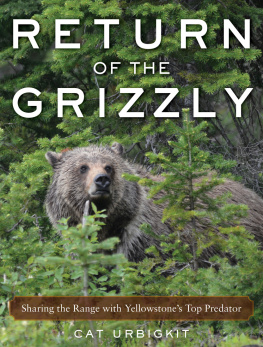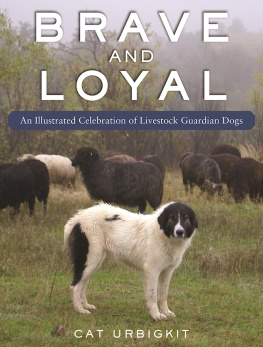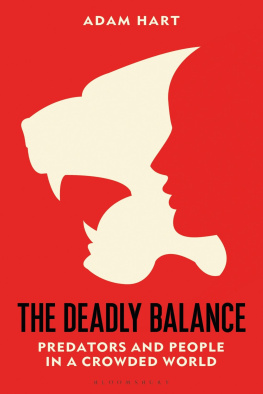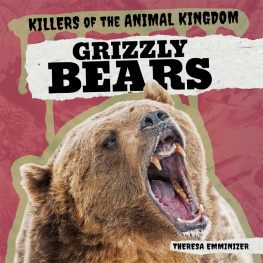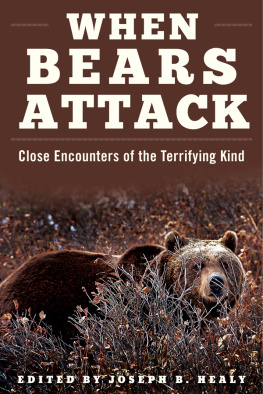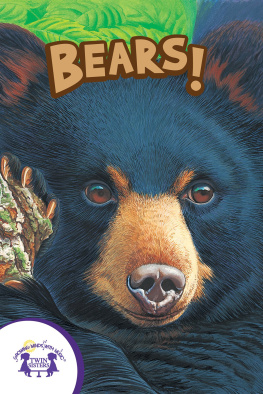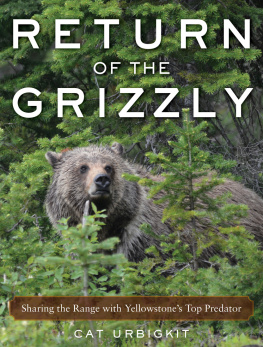About the Author
Cat Urbigkit is an award-winning writer and photographer. She has written ten books, including Yellowstone Wolves: A Chronicle of the Animal, the People, and the Politics and Shepherds of Coyote Rocks: Public Lands, Private Herds, and the Natural World. She maintains the Wolf Watch newsblog and contributes regularly to regional newspapers and other outdoor blogs. She lives in western Wyoming.
Chapter 1
Black Bears
Jake Francom awoke in his tent in a Utah campground at 5:30 a.m. on June 17, 2007, to the sensation of claws grasping at his skull. A black bear was attacking him through the side of the tent, hitting Francom several times as it clawed its way inside the tent. When Francom tried to sit up, the bear pushed him back down, with one paw slashing the tent open and ripping his pillow. Francom yelled to his buddies in nearby tents for help as he struggled to escape his tent and the grasping claws.
Firing their guns into the air and yelling, the men scared the bear away from their camp. But when the bear was 50 yards away, it sat down on its haunches and looked back at the group of people. The men once again took up their pursuit of the bold bruin, throwing rocks and yelling at the bear to fully scare him away.
Now that they were up, Francom and his friends looked around and saw the bear had ransacked their campsite, raiding and damaging the coolers sitting outside their tents. They were camped in a dispersed campsite in Utahs American Fork Canyon in the Uinta National Forest. This was a popular camping spot, although it had no water or bathroom facilities. The fire pit, log bench, flat spot for tents, and parking spot off the roadway made it a cozy campsite for recreationalists in this scenic national forest. The US Forest Service managed the campground, and charged a fee of $13 per night for use of the site, which was accessed by a forest service road.
Francom called in the bear attack to the Utah County Sheriffs Office Dispatch. The dispatcher said she would notify the forest service about the incident, while Francom should contact state wildlife officials.
This is when the system failed.
Although a forest service law enforcement officer was notified about the incident, and despite promises otherwise, that officer did not contact anyone else in her agency, or take any action of any kind in response to the bear attack. No one else in the forest service knew about the incident, and no action was taken to warn other campers about the potential danger.
Francom was able to notify state wildlife officials, and they did take action. The Utah Division of Wildlife Resources has a three-level classification system for problem bears. The highest classification is Level III, for bears that have shown no fear of humans, have displayed aggressive behavior toward humans, and are deemed a threat to public safety. Utah officials immediately classified the bear as a Level III nuisancethe high-danger classification that acknowledges the animal must be destroyed. Two wildlife officials with tracking dogs were brought in to track the bear, but were unsuccessful despite five hours of effort. The team concluded its search around 5 p.m. the same day of the attack, deciding to attempt to trap the bear the next morning from the Francom campsite, which was empty since Francom and his friends had departed the scene. One of the two state bear trackers later acknowledged that the Fran-com campsite was the best place to attempt to trap the bear, since it would likely return to that location.
Sam Ivess family didnt know any of this when they arrived at the campsite that evening. They had no idea that a bear had attacked a man in his tent at the same campsite just twelve hours before. They checked in with the forest service campground host before proceeding to the campsite. The campground host had not been told of the earlier bear attack, so he could not and did not relay any information to the family seeking out a camping spot for the night. The family set up camp, cooked dinner, cleaned up, packed their gear away, and climbed into their multichambered tent to sleep. It was a great end to Fathers Day. Eleven-year-old Sam crawled into the smaller compartment of the two-room tent. Without his parents knowing it, Sam snacked on a granola bar and placed the empty wrapper in a pocket of the tent.
Sometime during the night, the black bear that had attacked Jake Francom just hours before returned to the campsite where the family slept. It ripped open the side of the tent where Sam slept, grabbing the boy and killing him. His parents heard a noise and got up to have a look around, but were unable to find Sam. Confused, they didnt know if Sam was lost in the dark, or perhaps had been kidnapped. They called for help and a search was quickly conducted. Sams body was found about 400 yards from the campsite. The 300-pound black bear that killed Sam was found and killed the next day, after state wildlife officials again sought out the predator in an intensive search involving twenty-six search hounds.
The fatal mauling in Utah was a tragedy. The incident earlier that day had provided clues that a fatal attack may be imminent, but agency managers failed to pick up on those clues. The reality was that an increasingly aggressive black bear, which had demonstrated no fear of humans, had received food rewards. The bear was a ticking bomb. The lack of understanding of the increased danger posed by this bear resulted in the death of a little boy.
A federal court judge called Sam Ivess case heart-wrenching as he pondered the details of the little boys death. US District Judge Dale A. Kimball noted that the boys parents had suffered an almost unbearable, unimaginable loss, but that an assignment of fault must be made. Ten percent of the fault fell upon the family itself, the court ruled, because of the food that was found in the family tent (a granola bar and a can of soda). The Utah Division of Wildlife Resources was found to be 25 percent at fault for failing to communicate with the US Forest Service that the wildlife agency had determined the bear was a Level III nuisance that must be destroyed because of the threat to public safety, and because efforts to remove the bear werent initially successful. The remaining 65 percent of fault was attributed to the United States for its failure to warn the family of the earlier bear attack and failure to close the campsite where the attack had occurred. The federal government was ordered to pay Sam Ivess parents $1.95 million. Additionally, the forest service law enforcement officer who failed to take action or to communicate with others in her agency about the initial attack on Jake Francom was terminated from her position. The court noted that it was foreseeable that the Francom bear would return to the campsite where it had earlier attacked campers and found food, yet no action was taken to protect the public at that specific location.
It is worth noting that Utah allows bear hunting in this region of the state, but this particular bear apparently had no fear of humans. Utah wildlife officials report that the states black bear population appears to have increased in the last decade or so, with increased numbers of human-bear conflicts, and rising numbers of bears trapped, moved, and euthanized as a consequence.
Attraction Equals Danger
Black bears are often brought into conflicts with humans after being attracted to human food, garbage, or feed products set out for pets or domestic animals. Without fail, every year in North America humans receive injuries from being mauled by black bears. Researchers believe that black bears can become increasingly aggressive in seeking human-provided food or garbage, which increases the likelihood of serious attacks on humans.


